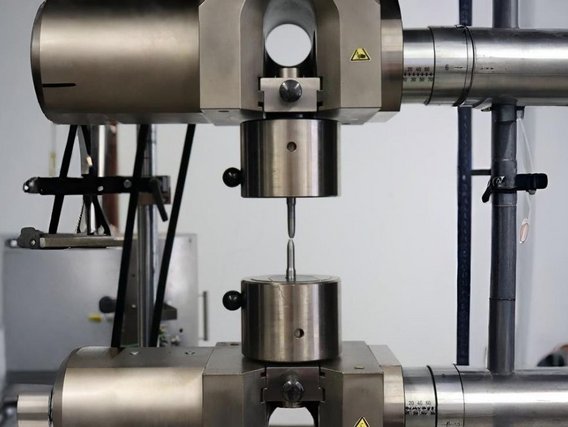
Quality assurance through materials testing
Materials testing includes various test methods with which the behavior of material samples or finished components can be determined when tested under mechanical, thermal or chemical stresses. A material is tested, for example, with regards to its.
- Chemical composition,
- Quality,
- Resilience.
Generally, we differentiate in materials testing two areas: destructive and non-destructive materials testing.
We are testing according to
- Regulations and standards
- Specifications according to delivery, company or other requirement.
We develop an individual testing scheme for your products and create a corresponding specification and test-report.
Mechanical test methods in our laboratories
With destructive testing, in contrast to non-destructive testing, no consideration has to be given to the further use of the components. There are no limits, which allows a much more versatile assessment of the material. This plays an essential role especially in the context of damage assessments.
The TUV NORD test laboratories support you in solving problems in the operation of your plant or in the manufacture of your products. We offer you a broad range of material tests from one source.
Our testing laboratories are
- Accredited according to EN ISO/IEC 17025
- Certified according to ISO 9001 (selected laboratories)
credited body
Our services at a glance:
- Tensile strength
- Elongation at break
- Bending test
- Notched bar impact test
- Hardness test
- Compression and burst tests
- Life cycle tests/ component metallography
- Corrosion tests
- Fatigue strength / component tests
- Damage analysis/ damage assessment
During destructive materials testing, selected materials are tested for chemical and physical properties and destroyed or (superficially) changed for this purpose; the component to be tested can then no longer be used.
Non-destructive Material Testing
Non-destructive Testing methods in our laboratories
The aim of non-destructive testing (NDT) is to obtain as much information as possible about the condition of a material or component without destroying it – e.g., without impairing its continued usability.
With the help of non-destructive testing methods, it is possible, for example, to obtain information about the wall thickness or the condition of weld seams and thus to ensure safe continued operation without having to remove the relevant components.
Non-destructive testing (NDT) is an effective way for you, being a manufacturer or operator of a technical plant, to obtain a reliable statement about the quality of your product or the condition of your plant quickly and at low cost. This makes it possible to detect quality defects at an early stage or to determine remaining service lives.
Our services at a glance:
- Radiographic testing (RT)
- Magnetic particle inspection (MT)
- Visual inspection (VT)
- Ultrasonic testing (UT)
- Eddy current testing (ET)
- Penetrant testing (PT) - Dye penetrant testing
- Acoustic emission testing (AT)
- Thermography
- Videoscopy/Endoscopy
- Helium leak test (LT)
For non-destructive testing, test laboratories with many years of know-how are at your disposal:
- Testing laboratories according to EN ISO/IEC 17025:2018
- Certified testers according to DIN EN ISO 9712, level 2 and 3 (additionally approved according to DGRL VT-visual inspection)